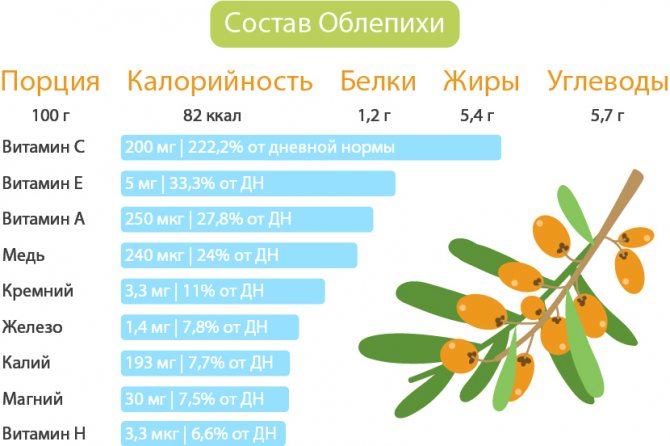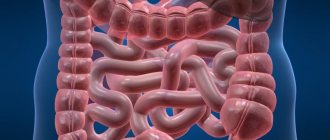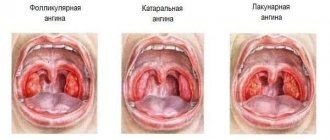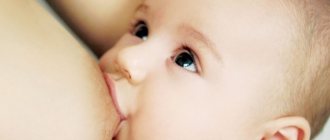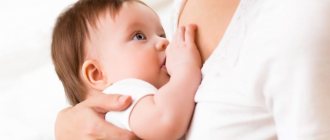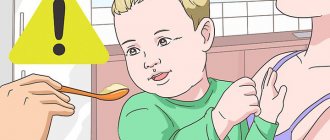Causes of cracked nipples
Doctors say that cracked nipples can appear due to a long list of problems. They can be divided into two large groups.
Everyday problems:
- The girl’s neglect of the rules of personal hygiene;
- Washing your breasts with soap and lye, which dries them out and causes cracked nipples;
- Incorrect attachment of the baby to the breast during feeding;
- Breast injuries, for example, if the baby is already teething. Feeding a child who already has teeth can lead to him, for example, biting the breast;
- Wrong choice of bra;
- Using a rough or poorly made washcloth or towel;
- The appearance of allergies to cream, soap, shower gel, lotion and other products;
- Long-term effects on the breast skin of bad water on the beach or in the pool;
- Frequent visits to the solarium, topless tanning on the beach;
- Severe cooling or heating of the chest area, wearing clothes inappropriate for the weather;
- Personal characteristics of a girl’s orgasm, especially excessive sensitivity of the nipples;
- Mommy’s inept use of devices for sucking milk from the breast;
- Mood swings, stress, nervous tension.
Medical problems:
- Skin and other diseases, for example, thrush, diabetes;
- Decreased immunity of the girl;
- Tumor in the breast, cancer;
- Metabolism problems;
- Lack of minerals and vitamins in the female body;
- Using certain medications, such as those that help relieve depression;
- Use of hormonal contraceptives.
Of all these reasons, the most common is improper feeding of the baby. All other causes are much less common and cracks are easily eliminated either by getting rid of irritating factors or by treating the disease. But it’s worth taking a closer look at incorrect feeding techniques.
Complications and consequences of this disease
In addition to causing pain, cracks can lead to infections in the mammary glands and lead to serious inflammation. Infection of wounds can also cause the development of mastitis.
Signs of infection:
- swelling, redness of the nipples and surrounding area;
- pain;
- burning at the site of inflammation;
- suppuration of wounds;
- increase in general body temperature;
- swelling of the mammary glands.
With mastopathy, redness is also observed in the affected areas of the mammary gland, and lumps can be felt around the circumference. If infection is suspected, breastfeeding should be interrupted. It is allowed to feed the baby only with expressed pasteurized milk.
How women deal with cracked nipples
Judging by the reviews from the forums, cracks in the nipples mainly bother nursing mothers, and they cause them very serious inconvenience. More experienced people advise smearing the breasts with special creams, for example, D-panthenol or Bepaten. Avent oil also helps, and it copes with any cracks. Another good remedy is rest - do not give the baby a sore breast for a couple of days, but simply express milk. The breasts will rest and the cracks will heal.
Also, experienced mothers note that sometimes cracks appear out of habit. Gradually, the nipple gets used to being grasped by the child, and the cracks disappear.

How to quickly get rid of the problem?
The exact timing of when the cracks will go away depends on the severity of the lesion, the presence of an infectious lesion and the timeliness of taking therapeutic measures.
Minor damage will heal on its own over time if you correct the feeding process and follow the rules of personal hygiene. Medium-sized and deep cracks must be treated as quickly as possible using a set of therapeutic measures.
Before starting treatment, you need to remove the cause of the damage and only then begin the wound healing process. Otherwise, therapy will not produce results. In parallel with methods aimed at rapid healing of wounds, it is necessary to take actions to prevent breast infection.
Proper feeding

From the very beginning, a newborn must be taught to grasp the breast correctly: the mouth is open wide, the nipple rests against the baby’s palate, his lower lip is slightly tucked in, and grasps the areola more than the upper one. The child should grasp not only the nipple, but also most of the areola, because it is when pressing on it that milk will flow from the mammary gland. If the baby only latches onto the nipple, the most delicate area of the mother's breast skin will be damaged by the baby's lower lip and jaws. Prolonged irritation will lead to cracks.
When feeding your baby, you need to hold his head and press his tummy to you. Otherwise, when the baby finishes eating, he will turn his head away, holding the nipple in his jaws. This will result in injury to the delicate skin of the breast. When a child's nipple is pulled out by force, he will squeeze it with his jaws or erupted teeth, which also causes the formation of wounds.
If cracks appear, mothers should not use silicone breast pads, as they get wet, irritate the nipples and carry the risk of bacterial infection.
Many mothers are interested in whether it is possible to breastfeed a baby when cracks appear? If they are not deep and do not bleed, you can. In this case, you need to follow several rules:
- breastfeed first, where there are no cracks or they are small;
- Wipe your breasts well before and after feeding;
- It is better to express a very sick mammary gland and bottle-feed the baby;
- express the breast carefully, pressing on the areola, and not on the nipple itself;
- There should not be a long break between feedings;
- use pads only when the pain during feeding is unbearable;
- Do not feed with pads for a long period, as this may lead to a decrease in lactation, addiction to the pacifier and the baby’s refusal to take the breast without these devices.
In addition, doctors do not recommend that nursing mothers wash their nipples with soap and other drying compounds. Before and after feeding, they should simply be rinsed with warm water. Any type of soap and gels can be used, no more than 1-2 times a week, choosing non-aggressive products.
Medicines
Medicine mainly uses the treatment of cracked nipples with local antibacterial wound-healing ointments or creams. General-spectrum medications are prescribed only in cases of infection of the mammary glands, as well as when cracks are a symptom of a disease (cancer, skin dermatitis, diabetes).
This or that type of drug is selected individually for each patient, because most medications are not compatible with breastfeeding.
To relieve an aggressive inflammatory process, antibiotics, antipyretics and painkillers are used, and a solution of potassium permanganate, chlorhexidine digluconate, and hydrogen peroxide is suitable for washing wounds. Doctors strongly do not recommend treating the affected areas with a solution of iodine or brilliant green, as their alcohol base will dry out the wounds and cause even greater inconvenience.
In order to compensate for the lack of useful substances, complex vitamin-mineral complexes or separate groups of vitamins are prescribed: Complivit, Aevit, Alphabet, Vitrum, etc. It is equally important to take means to improve immunity: Immunal, echinacea extract, Revit, etc.
Creams and ointments

In the pharmacy you can find a huge number of creams and ointments that can help with cracks in the nipple-areola area. It is recommended to combat skin damage with products based on dexpanthenol and lanolin. All topical drugs can be divided into several main groups:
- Made on the basis of dexpanthenol (wound-healing substance) - the products are spread on the nipple immediately after feeding and washed off before the next feeding if the cream is not completely absorbed into the skin. Bepanten is considered the most popular and effective of this group. Among the analogues: Panthenol, D-Panthenol, Dexpanthenol, Elfa Balm.
- Antiseptic drugs (based on zinc oxide) to prevent infection of wounds. Products are applied after feeding and washed off before the next feeding: Sudocrem, Tsindol, Disitin, Zinc ointment
- Preparations with lanolin (a type of animal fat, well moisturizes, nourishes the skin, creates a protective layer). The nipples should be smeared with a thin layer no more than two or three times a day, without rubbing into the skin. Types: Sanosan cream, nipple healing cream from Avent, Lanolin, Lanovit, etc.
- Preparations with retinol that soften the skin, accelerate cell regeneration, and restore the stratum corneum of the skin: Videstim, Redavit.
- Creams with natural oils based on plant extracts: kaz Vulnuzan, nipple care cream from Baby Lab, Mama Donna serum.
- Wound healing agents (apply three times a day, wash off before feeding): Soloxeril ointment, Actovegin.
The appropriate cream depends on the cause of the damage and the severity of the process.
Surgical treatment
Severe cracks in the areola and nipples, which have led to purulent processes or an abscess, will have to be operated on. There are three types of operations:
- Opening the abscess with sanitation of the cavity and installation of drainage.
- Sanitation of the cavity.
- Needle aspiration.
If the purulent process is just beginning, the doctor opens the suppuration, rinses the nipple cavity, installs drainage, and applies an antiseptic bandage. Needle aspiration is used in rare advanced situations. This is a minimally invasive operation in which pus is drained from the wound using a needle.
After surgery, treatment can be consolidated with a course of antibiotics and physiotherapeutic procedures (electrophoresis, phonophoresis, UHF) in order to completely heal the damaged tissue and not cause a relapse.
Traditional treatment
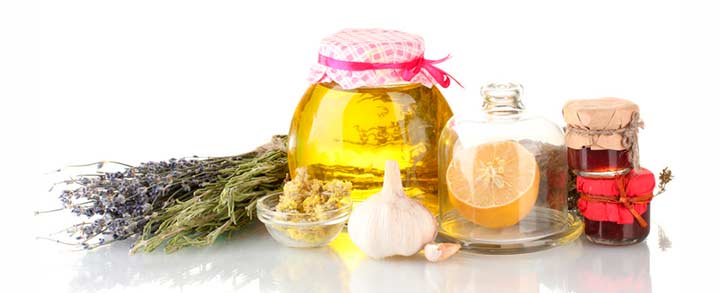
Small cracks can be cured without resorting to medications. Traditional treatment is inexpensive and very useful for breastfeeding mothers. It definitely won’t harm the baby and will allow breastfeeding to continue.
One of the long-standing effective ways to heal such damage is to smear your nipples with your milk after each feeding and keep your breasts open for longer (without a bra or clothing).
Sea buckthorn oil helps heal wounds well. This natural wound healing agent also moisturizes and softens the skin. A few drops are applied to the damaged area and rubbed lightly after each feeding. It is very convenient to use, since the composition does not need to be washed off before feeding the baby.
Olive, vegetable, peach, and cedar oils will also help get rid of damage. They are applied similarly to sea buckthorn oil.
A decoction of calendula or rosehip will help heal wounds. A tablespoon of calendula flowers or rose hips is poured into a glass of hot boiled water and left for 15-20 minutes. From the resulting decoction you need to apply lotions to the damaged area using a cotton swab or gauze.
An effective antiseptic and anti-inflammatory agent is the oil infusion of chlorophyllipt. Why is the drug considered a folk remedy? Because it is based on eucalyptus leaves, which have powerful anti-inflammatory and disinfecting properties.
The most inexpensive home method for treating cracks is to apply a slightly mashed cabbage leaf, pure or smeared with honey, to the affected area. Such compresses can be done both during the day and at night.
Chemical composition of sea buckthorn oil
Sea buckthorn oil is a viscous liquid of bright orange color with a characteristic odor. The product is recommended for use as an anti-inflammatory, antibacterial, wound healing agent, as well as in the treatment of peptic ulcers. As for the benefits of oil in the treatment of nipple problems, we can note its ability to have a stimulating effect on the restoration processes in tissues and at the same time relieve pain.

The oil owes this set of beneficial properties to the rich chemical composition of the fruit, which includes components such as:
- vitamins A, C, B, K - stimulate the absorption of macro- and microelements, improve the body’s resistance to viral diseases; participate in metabolic processes;
- carotenoids - preserve skin youth, protect mucous membranes from inflammation, restore skin cells after irritation and damage;
- tocopherols - have a rejuvenating effect on the body’s cells, preventing them from aging;
- sterols - protect the body from infections;
- phospholipids - do a great job of restoring damaged areas of cellular material, improving their blood supply;
- fatty acids - improve the structure of cell membranes, remove cholesterol and toxins from the body;
- phenolic acids - have a calming effect on the nervous system, reduce temperature during illness;
- serotonin - a substance that is responsible for a “good mood”, helps relieve stress and irritability, which cause discomfort during illness;
- bioflavonoids - have a positive effect on the walls of blood vessels, making them more elastic;
- macro- and microelements (calcium, magnesium, potassium, etc.) - substances actively participate in all metabolic processes, strengthen the immune system, and promote the regeneration of cellular tissues.
